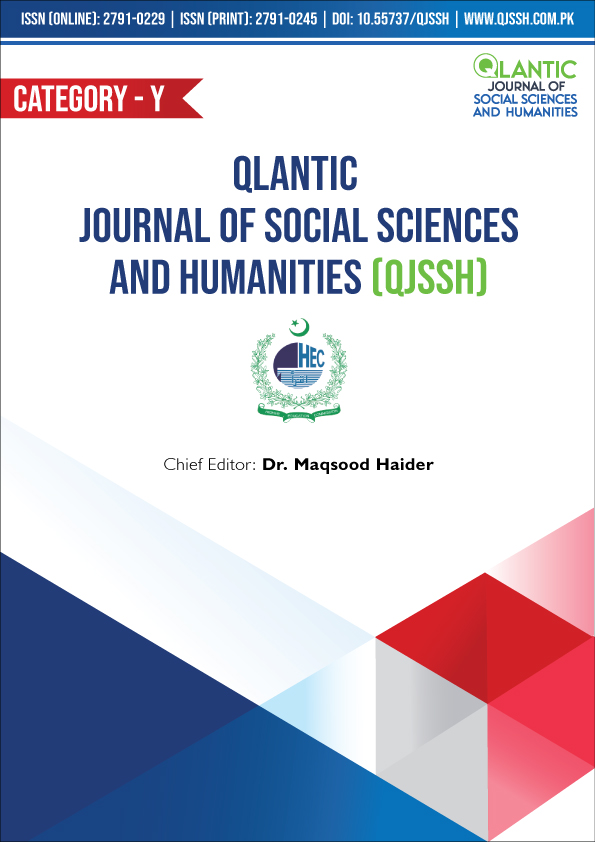Stylistic Study of Keats’ Ode to Nightingale
DOI:
https://doi.org/10.55737/qjssh.vi-i.25295Keywords:
Negative Capability, Modes and Moods, Imagery, Metaphors, SimilesAbstract
The study is about the stylistic analysis of the poem "Ode to a Nightingale" composed by John Keats, one of the best romantic poets. He is termed as the poet of beauty and beauty is his religion. He says that Beauty is truth and, Truth is beauty. He believes that A Thing of Beauty is a joy forever. He is also a good preacher of Negative Capability. For him, Negative capability is such a competent skill of one's mind which enables the man to reach the truth without being uncertain and irritated. This competent skill of the poetic mind enables a poet to enjoy all modes and moods of life as it is. All the possible stylistic devices like imagery, metaphors, similes, romantic references, and various sound patterns were employed to serve the purpose of the present study.
References
Ali, M. (2016). The Critical Analysis of The Poem ―Ode to a Nightingale by John Keats through Iser‘s Theory of the Act of Reading. International Journal of Science and Research (IJSR), 5(12), 1066-1073. https://www.scribd.com/document/424874674/ART20163447-pdf
Arnold, E. Mundra, S. C. John Keats, Selected Poems. 7th edition.
Bate, W. J. (1964). Keats a Collection of Critical Essays. New York: Prentice Hall.
Bloom, H. (2007). Bloom’s Modern Critical Views: John Keats—Updated Edition. New York: InfoBase Publishing, 2007.
Forman, H. B. (1907). The Complete Poetical Works of John Keats. Oxford University Press.
Khan, J. U. (2002). Keats's' Ode to a Nightingale': an appreciation in keatsian aesthetics with possible sources and analogues. https://govtcollegegharghoda.in/Content/GECDL_KEATS'S%20ODE%20TO%20A%20NIGHTINGALE%20(%20PDFDrive%20)_119_118.pdf
Kumar, M. (2014). John Keats- The Notion of Negative Capability and Poetic Vision. International Journal of Research, 1(4), 912–918.
Kumar, S., & Singh, S. (2012). A Few Lines on The Odes of John Keats. International Journal of Scientific and Research Publications, 2 (10), 1-3. https://citeseerx.ist.psu.edu/document?repid=rep1&type=pdf&doi=a0b78f8bf4d4dc9af4f9ffe014efd2ee6cbfbb44
Matthews, G. M. (2003). John Keats The Critical Heritage. Routledge. https://doi.org/10.4324/9780203199473
Raymond, C. (1973). Linguistics and Literature: An Introduction to Literary Stylistics. London
Scott, G. F. (2002). Selected Letters of John Keats. Harvard University Press.
Sikka, S. (1998). On The Truth of Beauty: Nietzsche, Heidegger, Keats. The Heythrop Journal, 39(3), 243–263. https://doi.org/10.1111/1468-2265.00076
Tso, Y.-H. (2011). Keats’s Skepticism about Poetry’s Therapeutic Power. Intergrams, 11. https://dfll.nchu.edu.tw/intergrams/112/112-tso.pdf
Turner G. W. (1973). Stylistics. England: Penguin Books.
Downloads
Published
Issue
Section
License
Copyright (c) 2025 Dr. Iftikhar Haider Malik, Dr. Usman Ahsan, Muhammad Nadil Ali

This work is licensed under a Creative Commons Attribution-NonCommercial 4.0 International License.





